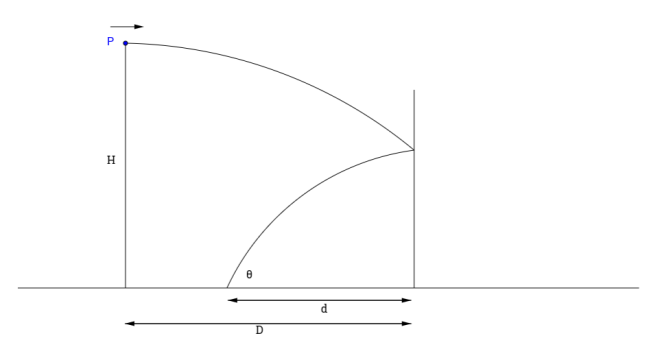A particle is thrown horizontally from a tower of height
. After some time, it hits a wall and falls on the ground with an angle
with the horizontal. Given that the distance between the tower and the wall is
and the distance between the particle and the wall is
, what is the height of the tower
?
Problem adapted from Brilliant.org
Honestly, I don’t know what should I do first to tackle this problem, since there are quite many different path that can lead to the same answer. So, the strategy I’d follow is backtracking. First, we note down some simple equations that might be useful afterwards. For example, the relationship between the horizontal partial speed and vertical partial speed.
The backtrack strategy is simple: We first arrive at the final equation, and continue solving for the missing variable until we break everything into their simplest form. In this case, .
Solve for ,
Now, we know that we have to solve for .
Then, we solve for . We know that particle
has traveled
horizontal distance.
Substitute into the previous equation.
Finally, we substitute into the first equation.
